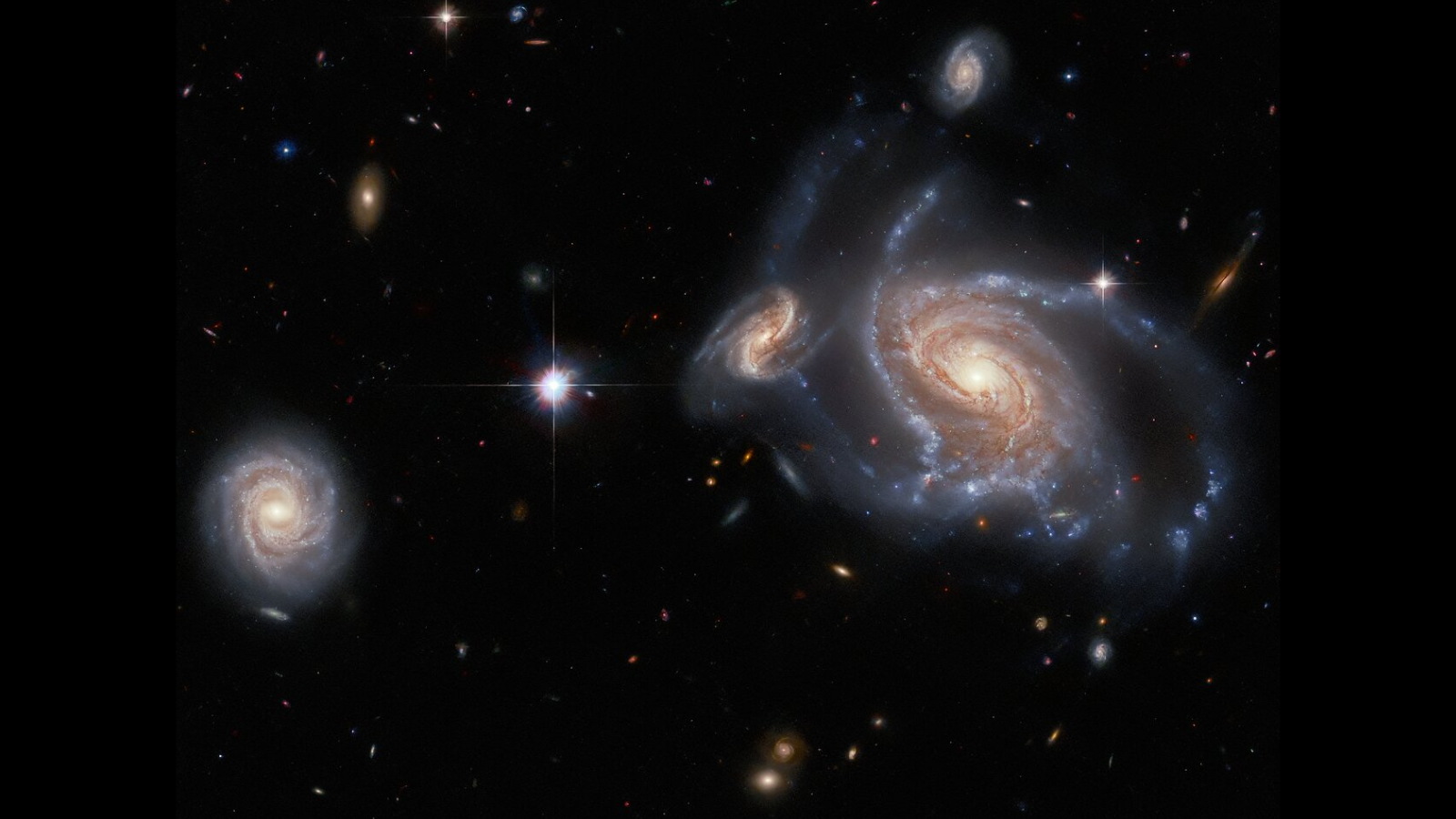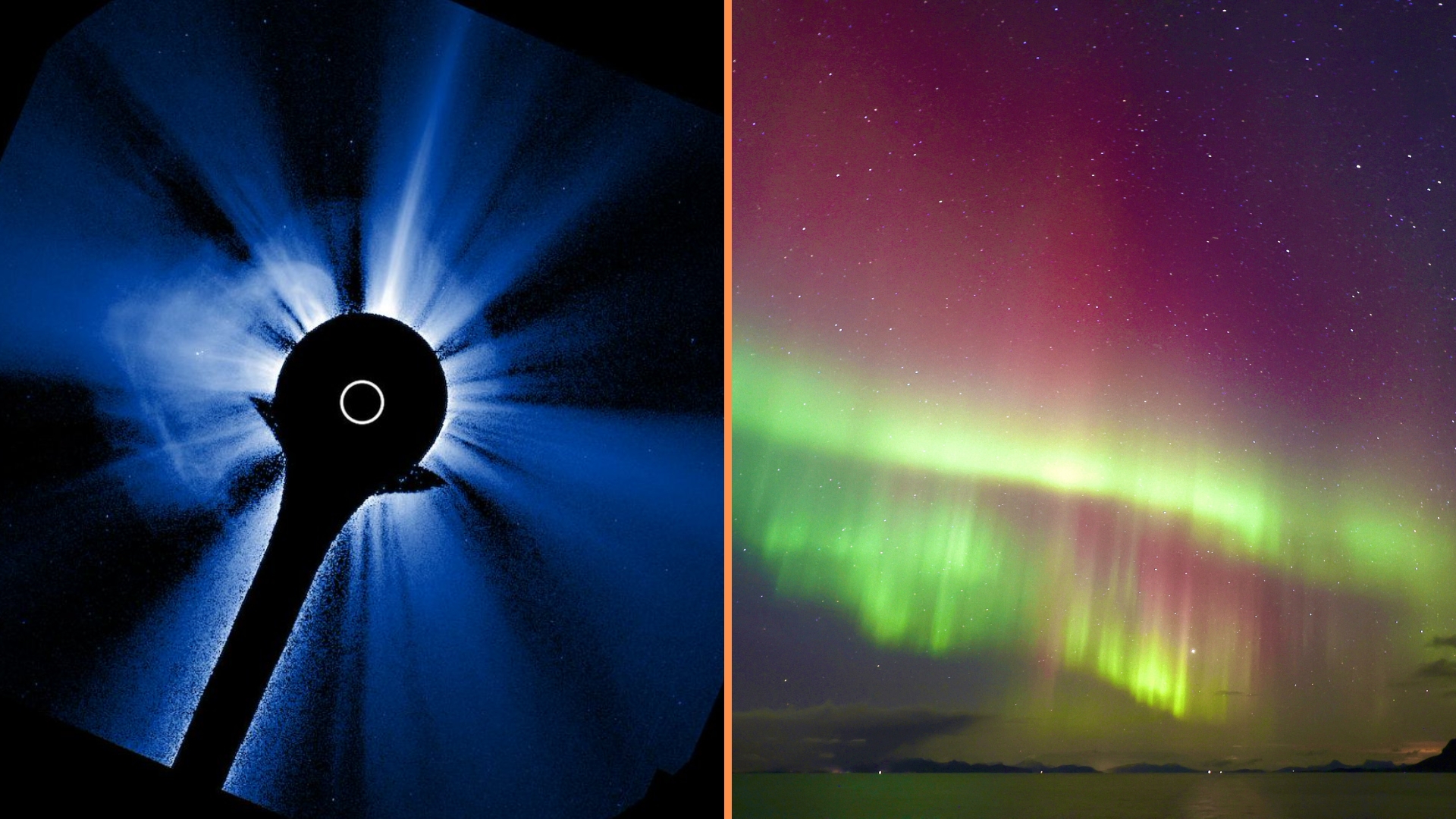Hubble Space Telescope spots a festive gathering of spiral galaxies (image)
The image, released on Christmas Day, shows a large spiral galaxy flanked by smaller and similarly shaped galaxies.

Hubble spied a collection of spiral galaxies, located at various distances from Earth and gathered for a stunning festive image released on Christmas Day.
The largest galaxy in the Hubble Space Telescope image from Monday (Dec. 25) is NGC 1356, which can be seen on the right side of the picture. This spiral galaxy is located 550 million light years from Earth, and can be seen in the constellation Horologium (the clock).
In the picture, NGC 1356 is flanked by several apparently smaller galaxies of similar spiral morphologies. Above the main galaxy is the galaxy known as LEDA 467699, while immediately to its left is LEDA 95415. To the far left of the trio of galaxies is yet another collection of stars: IC 1947.
The Hubble image is a striking example of how space shots can sometimes be deceptive. Though these galaxies appear to be close to NGC 1356 — with LEDA 95415 being so proximate that it appears to be interacting with the smaller galaxy — they are actually widely separated in the universe.
Related: Hubble Telescope sees a bright 'snowball' of stars in the Milky Way's neighbor (image)
This image shows the effect of taking the three spatial dimensions of the universe, and translating them into a 2D image. It also shows just how powerful Hubble is, with it being able to produce images of galaxies at a range of distances.
While NGC 1356 is located between 500 million and 600 million light-years from Earth, the galaxy with which it appears to be exchanging stars and gas is located at a considerably greater distance away. LEDA 95415 is actually 840 million light years away from us, meaning there is a vast 290 light year or so gulf between these galaxies. (For perspective, the closest star system to Earth is roughly four light years away.)
Breaking space news, the latest updates on rocket launches, skywatching events and more!
The vast separation between NGC 1356 and LEDA 95415 may also explain why the latter looks so much smaller in the Hubble image than the former. In reality, the two spiral galaxies are likely to be much closer in size to each other than it appears.
Going by the Hubble festive image alone, it may seem that the two most widely separated spiral galaxies it features are NGC 1356 (far right) and IC 1947 (far left), but these galaxies are closer in the actual universe than they appear in just two dimensions. IC 1947 is around 500 million light-years away from Earth, a roughly similar distance to NGC 1356.
Additionally, what seems like a wide horizontal separation between the two galaxies in the Hubble picture — also known as the angular distance — actually equates to little more than around 400,000 light-years. This situation makes NGC 1356 and IC 1947, also in the constellation Horologium, much closer cosmic neighbors than NGC 1356 and LEDA 95415.
Join our Space Forums to keep talking space on the latest missions, night sky and more! And if you have a news tip, correction or comment, let us know at: community@space.com.

Robert Lea is a science journalist in the U.K. whose articles have been published in Physics World, New Scientist, Astronomy Magazine, All About Space, Newsweek and ZME Science. He also writes about science communication for Elsevier and the European Journal of Physics. Rob holds a bachelor of science degree in physics and astronomy from the U.K.’s Open University. Follow him on Twitter @sciencef1rst.
